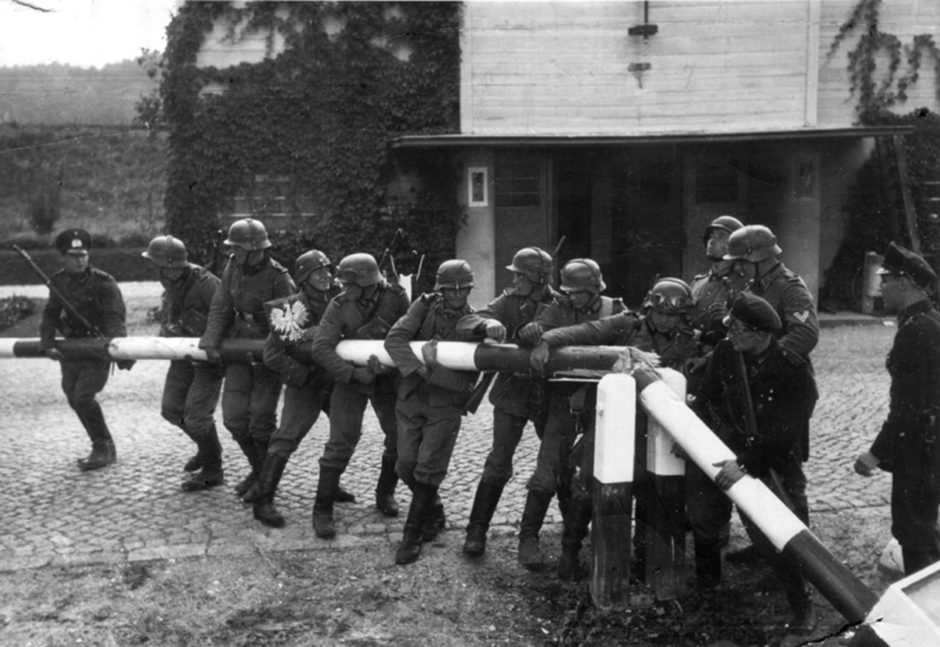Netflix’s ten-part series, Greatest Events of World War II in Color, is comprehensive and sweeping in scope, a definitive treatment of a conflict that revolutionized modern warfare, caused the deaths of millions of soldiers and civilians, and brought with it unparalleled atrocities against the Jewish population of Europe.
The expertly restored and colorized footage is graphic, taking a viewer from the plains of Europe to the jungles of southeast Asia. Commentary is supplied by British, German and American historians. British actor Derek Jacobi provides the narration.
The war’s major turning points are covered: Germany’s blitzkrieg in Poland and western Europe, the Battle of Britain, Japan’s bombing of Pearl Harbor, the Battle of Midway, the Battle of Stalingrad, the Allied landings in Normandy, the Battle of the Bulge, the firebombing of the German city of Dresden, and the destruction of Hiroshima and Nagasaki by means of nuclear weapons.
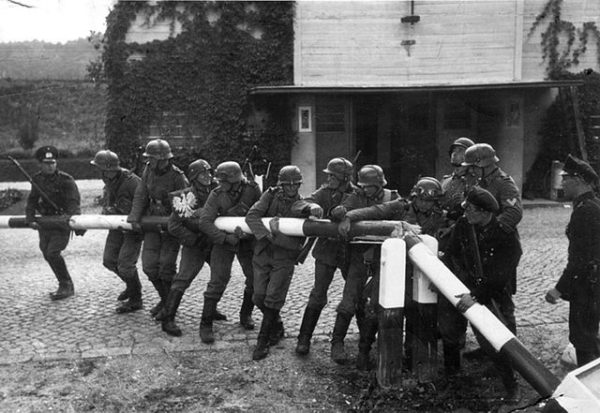
The ninth episode, Liberation of Buchenwald, deals exclusively with the events leading up to and including the Holocaust.
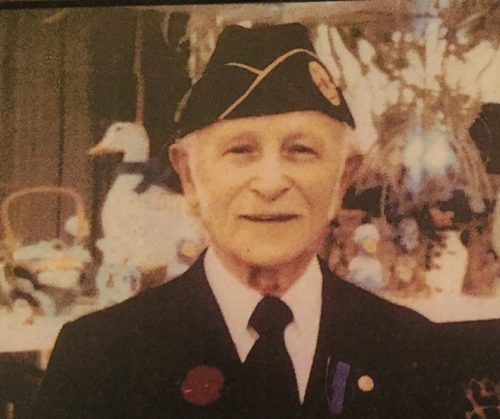
This documentary is timely. The 80th anniversary of the outbreak of the war was marked two months ago. I have a personal interest in it because my late father, David, was a combatant in the Polish army.
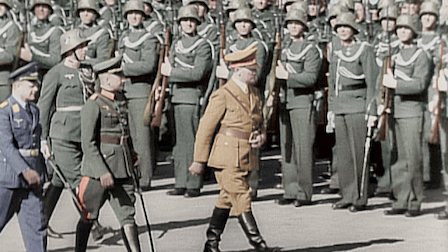
The first episode lays the groundwork for Germany’s aggressive plan to overturn the 1919 Treaty of Versailles and expand its borders at the expense of its neighbors. Germany toppled the status quo by recapturing the Rhineland, sweeping into Austria, conquering the Sudetenland, and occupying the rest of Czechoslovakia. With Germany’s lightning invasion of Poland on September 1, 1939, Britain and France declared war on Germany. During the ensuing “phony war,” German Chancellor Adolf Hitler deliberated what to do next. The answer came in 1940 as Germany invaded Denmark and Norway. And then, in a stunning display of mobile warfare, the Germans proceeded to invade Belgium, Holland, Luxembourg and France. Facing imminent defeat, British and French troops were evacuated from the French port of Dunkirk.
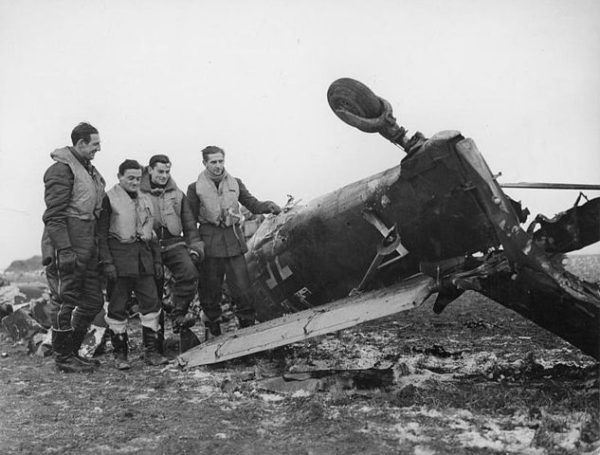
Acting on the belief that Britain was ripe for the picking, Germany planned a sea-borne invasion of the British isles, starting with massive air raids against Britain’s air bases. Hermann Goring, the head of the Luftwaffe, promised Hitler that the Royal Air Force would be destroyed in a month. “We shall never surrender,” thundered Winston Churchill, the new British prime minister. Determined to crush Britain, Germany went on to bombard British cities. Britain exacted a fearful toll on the Luftwaffe, which never recovered from its losses. In short, Hitler underestimated Britain’s resolve and capabilities.
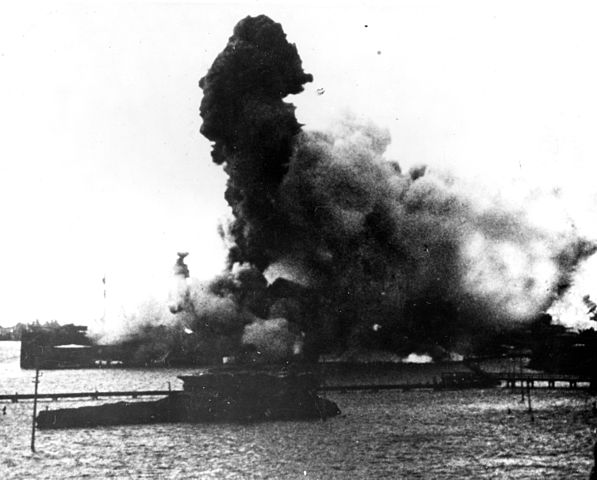
Japan’s attack on Pearl Harbor on December 7, 1941, described as one of the most “audacious gambles in military history,” caught the United States off guard. Japan’s motives were two-fold: to circumvent crippling U.S. oil sanctions and to create a Japanese empire in Asia. The Japanese armada heading toward the U.S. Pacific Fleet consisted of 30 ships carrying 480 aircraft and 16,000 sailors. Japanese pilots destroyed 19 ships and 328 planes on the ground and killed 2,403 Americans, all in two hours. All six U.S. aircraft carriers were on training missions elsewhere when Japan struck. Within 24 hours, Japan invaded Hong Kong, Thailand and the Philippines. The United States, ending its neutrality, declared war on Japan.
The two adversaries clashed some six months later in the Battle of Midway following Japan’s invasion of that remote U.S. island in the Pacific. The fierce fighting was a preview of what lay ahead. More than 3,000 American and Japanese troops were killed on Midway. U.S. aircraft sunk four Japanese aircraft carriers, obliterating the vital heart of Japan’s navy.
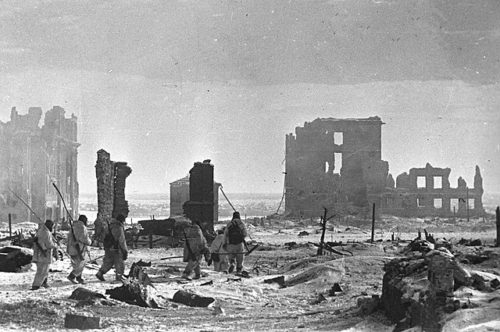
Two bitter ideological enemies, Germany and the Soviet Union, sent shock waves through Europe by signing a non-aggression pact on the eve of the war and partitioning Poland a month later. The truce was not to last. On June 22, 1941, Germany invaded the Soviet Union, pushing back the Red army to the gates of Moscow. Hitler then ordered the Wehrmacht to capture Stalingrad, which bore the Soviet leader’s name, Joseph Stalin. The Soviet army was instructed to defend the city at all costs, prompting the Luftwaffe to reduce Stalingrad to rubble in merciless bombing raids that claimed the lives of 40,000 civilians. Urban warfare broke out, and the Germans took 90 percent of the city. The Red Army launched a successful counter-offensive, driving German and allied Romanian and Italian soldiers into a besieged pocket. Winter weather and a shortage of food worsened the situation. Hitler commanded the German commander, General Friedrich Paulus, to fight to the last man, but he refused. Eight hundred thousand German and Axis troops had already been killed in the bloodiest battles of the war. He surrendered in 1943, in Germany’s first defeat, and tens of thousands of Germans fell into captivity.
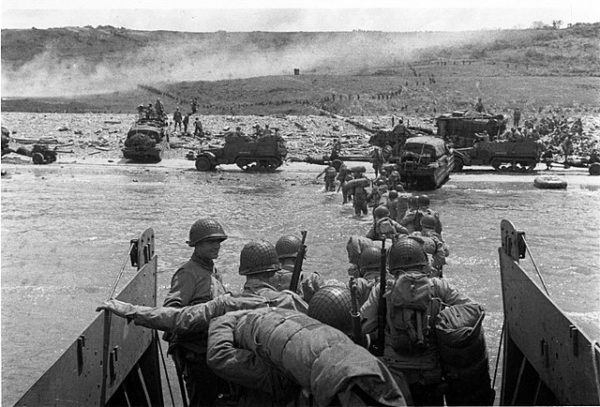
In the biggest invasion in history, the Allies launched Operation Overlord, or D-Day, on June 6, 1944. Canadian troops, in an unsuccessful raid at Dieppe in 1940, had come up short in testing German defences. Operation Overlord, aimed at recapturing German-occupied France, required a gigantic force of one million soldiers, 6,000 landing craft, 3,000 tanks and 12,000 aircraft. The supreme Allied commander was General Dwight Eisenhower. His German counterpart was General Erwin Rommel, who had commanded the Africa Corps. Expecting a landing at Calais rather than at Normandy, the Germans were thrown back by the Allied offensive, but casualties on both sides were heavy. Paris was liberated in August. Twenty thousand French civilians were killed in the crossfire as France was liberated. D-Day marked the beginning of the end of the Nazi regime.

By 1944, Germany was losing the war. The first German city to be captured by the Allies, Aachen, fell in September of that fateful year. In a desperate gamble, Germany deployed 225,000 troops to attack U.S. forces in the difficult terrain of the Ardennes forest. The Battle of the Bulge, which started on December 16, came as a surprise to the Americans and proved extremely costly. The Germans caused confusion by infiltrating English-speaking troops in U.S. army uniforms past American lines. The Wehrmacht was roundly defeated, losing 80,000 to 100,000 troops. Seventy five thousand U.S. soldiers were killed, in the single deadliest toll for the United States in the war.
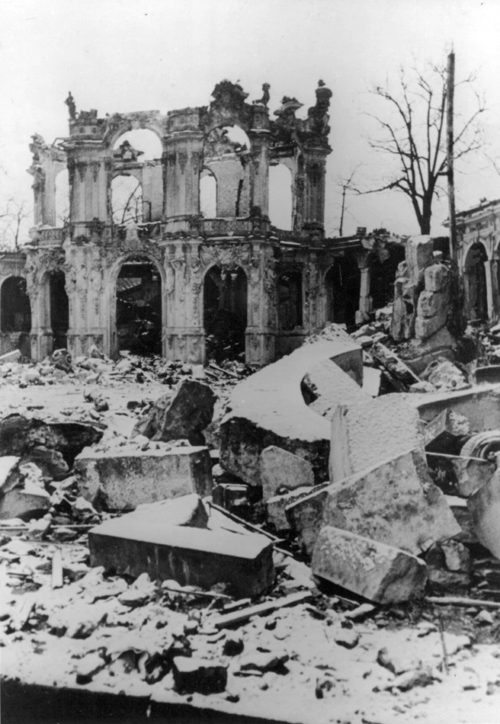
The joint British and American air raids on the eastern German city of Dresden on February 15, 1945 is still the subject of intense debate. Could the Allies morally justify the indiscriminate bombing of civilians? In fact, both sides resorted to this tactic. German air raids in Britain had caused the deaths of 40,000 people, while an Allied air raid on Hamburg on July 24, 1943 had killed 43,000 Germans. Dresden, a city of high culture and grand architecture, was a major rail hub and a significant weapons manufacturing center. It had been untouched by bombings and was unprepared for the onslaught. Arthur Harris, the commander of Bomber Command in Britain, believed that the bombing of German cities could break German morale and shorten the war. Three waves of hundreds of Allied bombers pulverized Dresden’s old quarter, causing a hellish fire that incinerated, cooked or melted its victims. Branding the Allies as terrorists, Propaganda Minister Joseph Goebbels claimed that 200,000 Germans had been killed. The real figure was 25,000, but Churchill distanced himself from the raid.
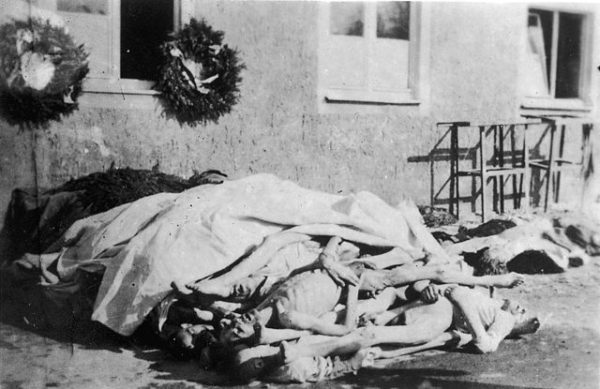
Goebbels, of course, was a total hypocrite. Under cover of the war, the Nazis exterminated six million Jews on an industrial scale in the Holocaust. The persecution of Jews in Germany began in 1933 and reached sickening heights during that decade. After the war began, the Nazis imposed terrifying measures on Jews in areas they occupied. Jews were ghettoized and killed in pogroms and mass shootings. And in accordance with the 1942 Wannsee conference in Berlin, Jews were murdered in a network of Nazi concentration camps in Poland ranging from Auschwitz to Treblinka. In Germany itself, political prisoners and then Jews and others were consigned to camps like Buchenwald, which opened in 1937. After the war, Eisenhower visited Buchenwald to see for himself the depths to which a civilized society could sink.
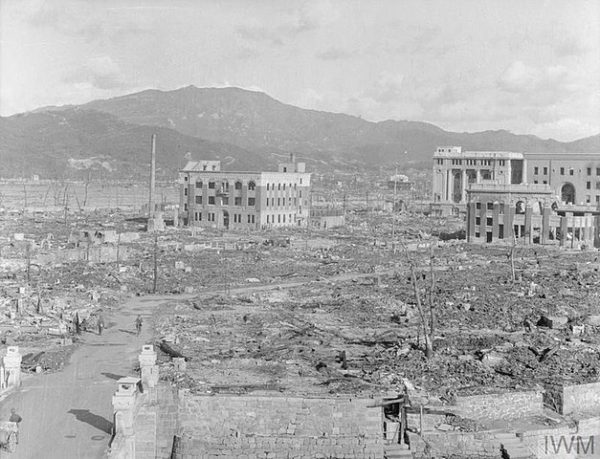
Japan was on the brink of defeat in 1945, but carried on zealously. In one Pacific island battle after another, Japanese soldiers fought ferociously and rarely surrendered, while Japan’s suicide pilots sunk 34 U.S. vessels with a loss of 10,000 sailors. Desperate to end the war, the United States bombed Tokyo on March 10, killing over 100,000 people in the single most destructive air raid of the war. Planning got under way for a U.S. invasion of Japan with a force of 1.6 million troops. President Franklin Roosevelt’s successor, Harry Truman, approved the first phase of it by ordering the capture of Okinawa. The tremendously high cost of wresting this island from Japan prompted Truman to cancel the invasion of mainland Japan. Far too many American lives would have been lost had it taken place. Japan rejected an ultimatum for unconditional surrender, prompting the United States to embark on the nuclear route. The atomic bomb, the product of the top secret Manhattan Project, was tested in July. In August, nuclear bombs were dropped on Hiroshima and Nagasaki, killing tens of thousands of people. On August 14, Emperor Hirohito announced Japan’s surrender. Japan surrendered officially on September 2, ending the most terrible war in history.
Greatest Events of World War II in Color graphically recreates this titanic struggle with verve and precision.
